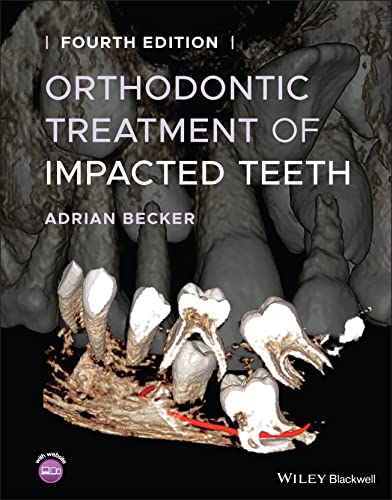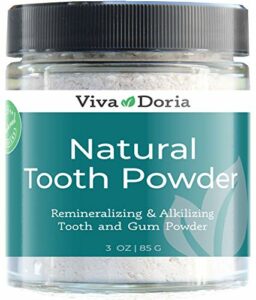Dear readers, we understand that dealing with jaw alignment problems can be a challenging and frustrating experience. The discomfort, pain, and self-consciousness that come with a misaligned jaw can greatly impact your daily life and overall well-being. That’s why we want to dive into the topic of orthodontic treatment and shed light on its potential to help address these issues. We hope to provide you with valuable insights and information, so that you can make informed decisions about your oral health and find the relief you deserve. So, let’s explore together how orthodontic treatment might just be the solution you’ve been looking for.
Transform Your Smile with Top-Selling Orthodontic Treatments
Understanding Jaw Alignment Problems
Jaw alignment problems can have a significant impact on our oral health and overall well-being. These issues can cause discomfort, difficulty in eating and speaking, and even affect our self-esteem. In this blog section, we will take a closer look at the different types of jaw alignment problems, their causes, and how they can be addressed.
Types of Jaw Alignment Problems
1. OverbiteAn overbite occurs when the upper front teeth overlap significantly with the lower front teeth. This misalignment can create an imbalance in the jaw, leading to pain and difficulty in chewing. It can also contribute to speech problems and an increased risk of dental issues such as tooth decay and gum disease.
2. UnderbiteConversely, an underbite is characterized by the lower front teeth protruding in front of the upper front teeth. This misalignment can affect the balance of the jaw, causing problems with chewing, speaking, and facial aesthetics. People with underbites may experience discomfort and are more prone to developing TMJ disorders.
3. CrossbiteA crossbite occurs when the upper teeth bite inside the lower teeth, either partially or completely. This misalignment can lead to an uneven bite, causing strain on the jaw joints and muscles. It can result in difficulties with chewing, teeth grinding, and even facial asymmetry in severe cases.
4. Open BiteAn open bite is characterized by a space between the upper and lower front teeth when the jaws are closed. This misalignment can make it challenging to bite into certain foods and may affect speech clarity. People with open bites may also experience excessive wear on their back teeth and temporomandibular joint (TMJ) issues.
Causes of Jaw Alignment Problems
Various factors can contribute to the development of jaw alignment problems, including:
- Genetic predisposition: Some people may be more prone to jaw misalignment due to inherited traits.
- Thumb-sucking or pacifier use: Prolonged habits like thumb-sucking or pacifier use can affect the growth and positioning of the jaw.
- Facial trauma: Injuries to the face or jaw can disrupt the normal alignment of the jaws.
- Poor oral habits: Habits like tongue thrusting or mouth breathing can impact the alignment of the teeth and jaws.
- Teeth grinding: Consistent teeth grinding or clenching can put excessive pressure on the jaw joints, leading to misalignment.
Impact on Oral Health and Overall Well-being
Jaw alignment problems can have a significant impact on both oral health and overall well-being. Some of the consequences include:
- Chronic jaw pain and discomfort
- Difficulty in chewing and speaking
- Increased risk of tooth decay and gum disease
- TMJ disorders, including headaches and facial pain
- Sleep apnea and breathing difficulties
- Self-esteem and confidence issues due to facial aesthetics
Addressing Jaw Alignment Problems
Fortunately, there are various treatment options available to address jaw alignment problems and improve oral health. These may include:
- Orthodontic treatment: Braces or clear aligners can gradually shift the teeth into proper alignment, correcting jaw misalignment in the process.
- Jaw surgery: In severe cases, surgical intervention may be necessary to reposition the jaws and achieve proper alignment.
- Dental appliances: Oral appliances like bite splints or mouthguards can help alleviate the symptoms associated with jaw misalignment and protect the teeth from damage caused by grinding or clenching.
By seeking appropriate treatment, individuals can not only improve their oral health but also alleviate discomfort and enhance their overall well-being.
Remember, if you suspect that you or a loved one may be experiencing a jaw alignment problem, it is essential to consult with a qualified dental professional. They can assess your condition and recommend the most suitable treatment options for your specific needs.
Don’t let jaw alignment problems hold you back from enjoying a healthy, confident smile. Take the first step towards addressing these issues and regain your oral well-being today.
Orthodontic Treatment Options
If you or a loved one are facing jaw alignment issues, it’s important to explore the available orthodontic treatment options. With advances in orthodontics, there are now several ways to address these concerns and achieve a beautiful, aligned smile. In this article, we will discuss the most common treatment options, including traditional braces, clear aligners, and specialized appliances. We will also touch upon the duration of treatment and potential challenges that patients may encounter.
Traditional Braces
Traditional braces have been a reliable option for correcting jaw alignment problems for decades. They consist of metal brackets that are bonded to the teeth and connected by wires. While they may not be the most aesthetically pleasing option, they are highly effective in correcting various orthodontic issues. Here are some key points to consider:
- Durability: Traditional braces are known for their durability and ability to handle complex cases.
- Affordability: They are often more affordable compared to some of the newer treatment options.
- Visibility: While they are not as discreet as other options, advancements have been made to make them less noticeable.
Clear Aligners
Clear aligners, such as Invisalign, have gained popularity in recent years due to their virtually invisible appearance. These custom-made aligners gradually shift the teeth into the desired position. Clear aligners offer several benefits:
- Aesthetics: Clear aligners are nearly invisible, making them an attractive option for individuals concerned about the appearance of braces.
- Removability: Aligners can be easily removed for eating, drinking, brushing, and flossing, allowing for better oral hygiene compared to fixed appliances.
- Comfort: Smooth and flexible aligners offer a more comfortable experience compared to traditional braces, with reduced irritation to the soft tissues of the mouth.
Specialized Appliances
In some cases, orthodontists may recommend specialized appliances to address specific jaw alignment problems. These appliances are designed to target and correct specific issues, such as overbites, underbites, or crossbites. Here are a few examples:
- Herbst Appliance: This appliance is used to correct overbites by encouraging the lower jaw to catch up with the upper jaw.
- Palatal Expanders: These appliances widen the upper jaw, making more room for crowded teeth and correcting crossbites.
- Headgear: Headgear is used to modify the growth of the face and jaws, treating severe overbites or underbites.
Duration of Treatment
The duration of orthodontic treatment varies depending on the complexity of the case and the chosen treatment option. On average, orthodontic treatment can last from several months to a few years. Here are some factors that may impact treatment duration:
- Severity of the condition: More severe jaw alignment problems may require longer treatment.
- Compliance: Patient cooperation, including wearing appliances or aligners as instructed, can significantly impact the duration of treatment.
- Age: Younger patients may experience faster results due to the still-developing jaw and facial bones.
Potential Challenges
Orthodontic treatment, while highly beneficial, may come with a few challenges. It’s important to be aware of these potential obstacles before beginning treatment. Some common challenges include:
- Discomfort: Discomfort and soreness are common during the initial adjustment period after getting braces or switching aligners.
- Dietary restrictions: Certain foods, such as sticky or hard items, may need to be avoided to prevent damage to braces or aligners.
- Oral hygiene: It is crucial to maintain excellent oral hygiene to prevent tooth decay and gum problems during treatment.
In conclusion, orthodontic treatment options have evolved significantly, providing patients with a variety of options to correct jaw alignment problems. Whether you opt for traditional braces, clear aligners, or specialized appliances, the end result will be a confident smile and improved oral health. Consult with your orthodontist to determine the most suitable treatment option for your specific needs.
Remember, each case is unique, and the advice of a qualified orthodontist is essential in making an informed decision. Don’t hesitate to schedule a consultation to explore which treatment option is best for you.
Benefits of Orthodontic Treatment for Jaw Alignment Problems
Orthodontic treatment is not only about achieving a beautiful smile; it also plays a crucial role in correcting jaw alignment problems. These problems can lead to difficulties in speaking, chewing, and overall oral health. In this blog section, we will discuss the specific benefits that orthodontic treatment offers in addressing jaw alignment issues, emphasizing how it improves both the alignment of teeth and the overall function of the jaws.
Improved Jaw Alignment
Orthodontic interventions, such as braces or aligners, effectively align the teeth, but they also have a significant impact on improving the alignment of the jaws. By applying gentle pressure on the teeth and jawbone, orthodontic treatment gradually guides the jaws into their correct positions. This results in improved alignment, which can alleviate various jaw alignment problems, including:
- Underbite: When the lower jaw protrudes beyond the upper jaw.
- Overbite: When the upper front teeth excessively overlap the lower front teeth.
- Crossbite: When the upper teeth sit inside the lower teeth when biting down.
- Open bite: When the upper and lower front teeth do not touch when the mouth is closed.
- Misaligned midline: When the center of the upper front teeth does not align with the center of the lower front teeth.
Enhanced Jaw Function
Orthodontic treatment not only improves the aesthetic appearance of the smile but also enhances the overall function of the jaws. Proper jaw alignment allows for better:
- Speech: Misaligned jaws can affect speech patterns, leading to difficulties in pronunciation and articulation. By correcting jaw alignment, orthodontic treatment can help individuals speak more clearly and confidently.
- Chewing: When the jaws are misaligned, it can be challenging to bite and chew food properly. This can result in digestive issues and insufficient nutrient absorption. Orthodontic treatment helps realign the jaws, enabling efficient and effective chewing, leading to improved digestion and overall health.
- Temporomandibular Joint (TMJ) Function: The TMJ is the joint that connects the jaw to the skull. Misaligned jaws can put additional stress on the TMJ, leading to temporomandibular joint disorder (TMD). Orthodontic treatment helps alleviate this stress by properly aligning the jaws, reducing the risk of TMD and associated symptoms, such as jaw pain, headaches, and difficulty opening or closing the mouth.
Overall Oral Health
Orthodontic treatment not only addresses jaw alignment issues but also has a positive impact on overall oral health. Some of the oral health benefits of orthodontic treatment include:
- Reduced Risk of Tooth Decay and Gum Disease: Misaligned teeth can create tight spaces that are difficult to clean, increasing the risk of tooth decay and gum disease. By aligning the teeth, orthodontic treatment makes oral hygiene practices more effective, reducing the chances of developing these oral health issues.
- Improved Bite Stability: Misaligned jaws can cause an uneven distribution of bite forces, leading to excessive wear on certain teeth. Orthodontic treatment helps achieve proper bite alignment, ensuring balanced bite forces and reducing the likelihood of tooth damage.
- Enhanced Self-esteem: Jaw alignment issues can often lead to self-consciousness and a lack of confidence in one’s smile. Orthodontic treatment not only improves the function of the jaws but also enhances the aesthetic appearance of the smile. This can greatly boost self-esteem and overall well-being.
Understanding the potential benefits of orthodontic treatment for jaw alignment issues
In conclusion, we have explored the question of whether orthodontic treatment can help with jaw alignment problems. Throughout the blog post, we have highlighted the potential benefits that orthodontic treatment can offer in addressing these issues. However, it is crucial to recognize that each individual’s circumstances may vary, and consultation with an orthodontist is essential. They can provide personalized advice and recommend the most appropriate course of action for specific jaw alignment concerns. We urge readers to seek professional guidance to ensure the best possible outcome for their jaw alignment problems.




















